How Do Citizens View Digital Government Services? Study on Digital Government Service Quality Based on Citizen Feedback
Abstract
1. Introduction
- RQ1. What factors of service quality do citizens care about?
- RQ2. How does the government perform regarding these factors from a citizen’s perspective?
- RQ3. What is the relationship between these factors and citizens’ overall service satisfaction?
- This study theoretically contributes to the digital government service evaluation domain by developing a technical framework (new method) that utilizes machine learning methods to analyze digital government service quality based on online review data to address the lack of flexibility and pertinence of existing methods, which is an unprecedented attempt;
- This study makes managerial contributions in helping digital government service providers and policymakers to enhance citizen satisfaction by providing an instrument to obtain a comprehensive analysis of digital government services from a citizens’ usage perspective.
2. Related Works
2.1. Citizen Satisfaction and Digital Government Service Quality
2.2. Text Mining
3. Citizen-Feedback-Based Analysis Framework of Digital Government Service Quality
3.1. Motivation
3.2. Framework Process
3.3. Service Quality Factor Discovery Based on Topic Modelling
3.4. Text Classification and Sentiment Polarity Analysis for Reviews
3.4.1. Text Classification for Service Quality Factors
3.4.2. Sentiment Polarity Analysis
3.5. Service Quality Analysis
3.5.1. Sentiment and Importance Analysis for Service Quality Factor
3.5.2. Dominance Analysis for Service Quality Factors
3.5.3. Correspondence Analysis for Service Quality Factors and Overall Satisfaction
4. Experiments and Results
4.1. Data Collection
4.2. Factor Discovery Results
4.3. Sentiment and Importance Analysis
4.3.1. Question-Type Level
4.3.2. Department Level
4.4. Dominance Analysis
4.5. Correspondence Analysis
4.6. Experiment Summary
5. Discussion and Conclusions
Author Contributions
Funding
Data Availability Statement
Acknowledgments
Conflicts of Interest
References
- Basu, S. E-government and developing countries: An overview. Int. Rev. Law Comput. Technol. 2004, 18, 109–132. [Google Scholar] [CrossRef]
- Desa, U. United Nations E-Government Survey 2018. In Gearing E-Government to Support Transformation towards Sustainable and Resilient Societies; United Nations: New York, NY, USA, 2018. [Google Scholar]
- Linders, D.; Liao, C.Z.P.; Wang, C.M. Proactive e-Governance: Flipping the service delivery model from pull to push in Taiwan. Gov. Inf. Q. 2018, 35, S68–S76. [Google Scholar] [CrossRef]
- Sharma, P.N.; Morgeson, F.V., III; Mithas, S.; Aljazzaf, S. An empirical and comparative analysis of E-government performance measurement models: Model selection via explanation, prediction, and parsimony. Gov. Inf. Q. 2018, 35, 515–535. [Google Scholar] [CrossRef]
- Zheng, Y.; Schachter, H.L. Explaining citizens’ E-participation use: The role of perceived advantages. Public Organ. Rev. 2017, 17, 409–428. [Google Scholar] [CrossRef]
- Chan, F.K.; Thong, J.Y.; Brown, S.A.; Venkatesh, V. Service Design and Citizen Satisfaction with E-Government Services: A Multidimensional Perspective. Public Adm. Rev. 2021, 81, 874–894. [Google Scholar] [CrossRef]
- Greaves, F.; Laverty, A.A.; Cano, D.R.; Moilanen, K.; Pulman, S.; Darzi, A.; Millett, C. Tweets about hospital quality: A mixed methods study. BMJ Qual. Saf. 2014, 23, 838–846. [Google Scholar] [CrossRef]
- Jones, S.; Murphy, F.; Edwards, M.; James, J. Doing things differently: Advantages and disadvantages of Web questionnaires. Nurse Res. 2008, 15, 15–26. [Google Scholar] [CrossRef]
- Zaman, N.; Goldberg, D.M.; Abrahams, A.S.; Essig, R.A. Facebook hospital reviews: Automated service quality detection and relationships with patient satisfaction. Decis. Sci. 2021, 52, 1403–1431. [Google Scholar] [CrossRef]
- Hawkins, J.B.; Brownstein, J.S.; Tuli, G.; Runels, T.; Broecker, K.; Nsoesie, E.O.; McIver, D.J.; Rozenblum, R.; Wright, A.; Bourgeois, F.T.; et al. Measuring patient-perceived quality of care in US hospitals using Twitter. BMJ Qual. Saf. 2016, 25, 404–413. [Google Scholar] [CrossRef]
- Chan, I.C.C.; Ma, J.; Ye, H.; Law, R. A comparison of hotel guest experience before and during pandemic: Evidence from online reviews. In Information and Communication Technologies in Tourism 2021: Proceedings of the ENTER 2021 eTourism Conference, 19–22 January 2021; Springer International Publishing: Berlin/Heidelberg, Germany, 2021; pp. 549–556. [Google Scholar]
- Luo, Y.; Tang, R.L. Understanding hidden dimensions in textual reviews on Airbnb: An application of modified latent aspect rating analysis (LARA). Int. J. Hosp. Manag. 2019, 80, 144–154. [Google Scholar] [CrossRef]
- Parasuraman, A.; Zeithaml, V.A.; Berry, L.L. A conceptual model of service quality and its implications for future research. J. Mark. 1985, 49, 41–50. [Google Scholar] [CrossRef]
- Engdaw, B.D. The impact of quality public service delivery on customer satisfaction in Bahir Dar city administration: The case of Ginbot 20 Sub-city. Int. J. Public Adm. 2020, 43, 644–654. [Google Scholar] [CrossRef]
- Lamsal, B.P.; Gupta, A.K. Citizen Satisfaction with Public Service: What Factors Drive? Policy Gov. Rev. 2022, 6, 78–89. [Google Scholar] [CrossRef]
- Sá, F.; Rocha, Á.; Cota, M.P. From the quality of traditional services to the quality of local e-Government online services: A literature review. Gov. Inf. Q. 2016, 33, 149–160. [Google Scholar] [CrossRef]
- Papadomichelaki, X.; Mentzas, G. A multiple-item scale for assessing e-government service quality. In Proceedings of the International Conference on Electronic Government, Lausanne, Switzerland, 29 August–2 September 2010; Springer: Berlin/Heidelberg, Germany, 2009; pp. 163–175. [Google Scholar]
- Alanezi, M.A.; Kamil, A.; Basri, S. A proposed instrument dimensions for measuring e-government service quality. Int. J. U-E-Serv. Sci. Technol. 2010, 3, 1–18. [Google Scholar]
- Parasuraman, A.; Zeithaml, V.A.; Malhotra, A. ES-QUAL: A multiple-item scale for assessing electronic service quality. J. Serv. Res. 2005, 7, 213–233. [Google Scholar] [CrossRef]
- Zaidi, S.F.H.; Qteishat, M.K. Assessing e-government service delivery (government to citizen). Int. J. Ebusiness Egovernment Stud. 2012, 4, 45–54. [Google Scholar]
- Hien, N.M. A study on evaluation of e-government service quality. Int. J. Humanit. Soc. Sci. 2014, 8, 16–19. [Google Scholar]
- Kurfalı, M.; Arifoğlu, A.; Tokdemir, G.; Paçin, Y. Adoption of e-government services in Turkey. Comput. Hum. Behav. 2017, 66, 168–178. [Google Scholar] [CrossRef]
- Janita, M.S.; Miranda, F.J. Quality in e-Government services: A proposal of dimensions from the perspective of public sector employees. Telemat. Inform. 2018, 35, 457–469. [Google Scholar] [CrossRef]
- Li, Y.; Shang, H. Service quality, perceived value, and citizens’ continuous-use intention regarding e-government: Empirical evidence from China. Inf. Manag. 2020, 57, 103197. [Google Scholar] [CrossRef]
- Feng, Z.; Zhang, L.; Shen, T. Research on the Way to Improve the Service Quality of Shanxi Government WeChat. In Proceedings of the 2019 Annual Conference of the Society for Management and Economics, Denver, CO, USA, 24–27 February 2019; The Academy of Engineering and Education: Washington, DC, USA, 2019; Volume 4, pp. 92–98. [Google Scholar]
- Chen, P.; Zhang, X. Evaluation and Empirical Study on the Information Service Quality of TikTok Government Accounts. Eurasian J. Soc. Sci. 2020, 8, 53–69. [Google Scholar] [CrossRef]
- Verdegem, P.; Verleye, G. User-centered E-Government in practice: A comprehensive model for measuring user satisfaction. Gov. Inf. Q. 2009, 26, 487–497. [Google Scholar] [CrossRef]
- Alawneh, A.; Al-Refai, H.; Batiha, K. Measuring user satisfaction from e-Government services: Lessons from Jordan. Gov. Inf. Q. 2013, 30, 277–288. [Google Scholar] [CrossRef]
- Stefanovic, D.; Marjanovic, U.; Delić, M.; Culibrk, D.; Lalic, B. Assessing the success of e-government systems: An employee perspective. Inf. Manag. 2016, 53, 717–726. [Google Scholar] [CrossRef]
- Lanin, D.; Hermanto, N. The effect of service quality toward public satisfaction and public trust on local government in Indonesia. Int. J. Soc. Econ. 2019, 46, 377–392. [Google Scholar] [CrossRef]
- Wang, C.; Teo, T.S. Online service quality and perceived value in mobile government success: An empirical study of mobile police in China. Int. J. Inf. Manag. 2020, 52, 102076. [Google Scholar] [CrossRef]
- El-Gamal, S.; Abd El Aziz, R.; Abouelseoud, M.F. E-Government Service Quality: The Moderating Role of Awareness and the Mediating Role of Consistency. Int. J. Electron. Gov. Res. 2022, 18, 1–21. [Google Scholar] [CrossRef]
- Gamaliel, H.; Kalangi, L.; Warongan, J. Service Quality of Government Institution and Its Influence on Public Satisfaction (Study in Regency/City Government of North Sulawesi). Int. J. Tour. Hosp. Asia Pasific 2022, 5, 1–12. [Google Scholar] [CrossRef]
- Barnes, S.J.; Vidgen, R. Interactive e-government: Evaluating the web site of the UK Inland Revenue. J. Electron. Commer. Organ. 2004, 2, 42–63. [Google Scholar] [CrossRef]
- Horan, T.A.; Abhichandani, T.; Rayalu, R. Assessing user satisfaction of e-government services: Development and testing of quality-in-use satisfaction with advanced traveler information systems (ATIS). In Proceedings of the 39th Annual Hawaii International Conference on System Sciences (HICSS’06), Kauai, HI, USA, 4–7 January 2006; Volume 4, p. 83b. [Google Scholar]
- Baker, D.L. Advancing e-government performance in the United States through enhanced usability benchmarks. Gov. Inf. Q. 2009, 26, 82–88. [Google Scholar] [CrossRef]
- Kaisara, G.; Pather, S. The e-Government evaluation challenge: A South African Batho Pele-aligned service quality approach. Gov. Inf. Q. 2011, 28, 211–221. [Google Scholar] [CrossRef]
- Omar, K.; Scheepers, H.; Stockdale, R. eGovernment service quality assessed through the public value lens. In Proceedings of the International Conference on Electronic Government, Tallinn, Estonia, 26–29 September 2011; Springer: Berlin/Heidelberg, Germany, 2011; pp. 431–440. [Google Scholar]
- Papadomichelaki, X.; Mentzas, G. e-GovQual: A multiple-item scale for assessing e-government service quality. Gov. Inf. Q. 2012, 29, 98–109. [Google Scholar] [CrossRef]
- Qutaishat, F.T. Users’ perceptions towards website quality and its effect on intention to use e-government services in Jordan. Int. Bus. Res. 2013, 6, 97. [Google Scholar] [CrossRef]
- Wijatmoko, T.E. E-Government Service Quality Using E-GovQual Dimensions Case Study Ministry of Law and Human Rights DIY. In Proceedings of the International Conference on Science and Engineering, Online, 3–4 October 2020; Volume 3, pp. 213–219. [Google Scholar]
- Chatterjee, S.; Goyal, D.; Prakash, A.; Sharma, J. Exploring healthcare/health-product ecommerce satisfaction: A text mining and machine learning application. J. Bus. Res. 2021, 131, 815–825. [Google Scholar] [CrossRef]
- Zhang, W.; Xu, H.; Wan, W. Weakness Finder: Find product weakness from Chinese reviews by using aspects based sentiment analysis. Expert Syst. Appl. 2012, 39, 10283–10291. [Google Scholar] [CrossRef]
- Yu, S.; Xia, F.; Liu, H. Academic team formulation based on Liebig’s barrel: Discovery of anticask effect. IEEE Trans. Comput. Soc. Syst. 2019, 6, 1083–1094. [Google Scholar] [CrossRef]
- Lee, A.J.; Yang, F.C.; Chen, C.H.; Wang, C.S.; Sun, C.Y. Mining perceptual maps from consumer reviews. Decis. Support Syst. 2016, 82, 12–25. [Google Scholar] [CrossRef]
- Shah, A.M.; Yan, X.; Tariq, S.; Ali, M. What patients like or dislike in physicians: Analyzing drivers of patient satisfaction and dissatisfaction using a digital topic modeling approach. Inf. Process. Manag. 2021, 58, 102516. [Google Scholar] [CrossRef]
- Yu, S.; Xia, F.; Wang, Y.; Li, S.; Febrinanto, F.G.; Chetty, M. PANDORA: Deep Graph Learning Based COVID-19 Infection Risk Level Forecasting. IEEE Trans. Comput. Soc. Syst. 2022, 1–14. [Google Scholar] [CrossRef]
- Marrese-Taylor, E.; Velásquez, J.D.; Bravo-Marquez, F. A novel deterministic approach for aspect-based opinion mining in tourism products reviews. Expert Syst. Appl. 2014, 41, 7764–7775. [Google Scholar] [CrossRef]
- Guo, Y.; Barnes, S.J.; Jia, Q. Mining meaning from online ratings and reviews: Tourist satisfaction analysis using latent dirichlet allocation. Tour. Manag. 2017, 59, 467–483. [Google Scholar] [CrossRef]
- Luo, J.M.; Vu, H.Q.; Li, G.; Law, R. Understanding service attributes of robot hotels: A sentiment analysis of customer online reviews. Int. J. Hosp. Manag. 2021, 98, 103032. [Google Scholar] [CrossRef]
- Mittal, D.; Agrawal, S.R. Determining banking service attributes from online reviews: Text mining and sentiment analysis. Int. J. Bank Mark. 2021, 40, 558–577. [Google Scholar] [CrossRef]
- Leem, B.H.; Eum, S.W. Using text mining to measure mobile banking service quality. Ind. Manag. Data Syst. 2021, 121, 993–1007. [Google Scholar] [CrossRef]
- Blei, D.M. Probabilistic topic models. Commun. ACM 2012, 55, 77–84. [Google Scholar] [CrossRef]
- Blei, D.M.; Ng, A.Y.; Jordan, M.I. Latent dirichlet allocation. J. Mach. Learn. Res. 2003, 3, 993–1022. [Google Scholar]
- Jung, Y.; Suh, Y. Mining the voice of employees: A text mining approach to identifying and analyzing job satisfaction factors from online employee reviews. Decis. Support Syst. 2019, 123, 113074. [Google Scholar] [CrossRef]
- Nassirtoussi, A.K.; Aghabozorgi, S.; Wah, T.Y.; Ngo, D.C.L. Text mining for market prediction: A systematic review. Expert Syst. Appl. 2014, 41, 7653–7670. [Google Scholar] [CrossRef]
- Do, H.H.; Prasad, P.; Maag, A.; Alsadoon, A. Deep learning for aspect-based sentiment analysis: A comparative review. Expert Syst. Appl. 2019, 118, 272–299. [Google Scholar] [CrossRef]
- Liu, Y.; Bi, J.W.; Fan, Z.P. Ranking products through online reviews: A method based on sentiment analysis technique and intuitionistic fuzzy set theory. Inf. Fusion 2017, 36, 149–161. [Google Scholar] [CrossRef]
- Yu, S.; Xia, F.; Li, S.; Hou, M.; Sheng, Q.Z. Spatio-Temporal Graph Learning for Epidemic Prediction. Acm Trans. Intell. Syst. Technol. 2023, 14, 36. [Google Scholar] [CrossRef]
- Osman, I.H.; Anouze, A.L.; Irani, Z.; Al-Ayoubi, B.; Lee, H.; Balcı, A.; Medeni, T.D.; Weerakkody, V. COBRA framework to evaluate e-government services: A citizen-centric perspective. Gov. Inf. Q. 2014, 31, 243–256. [Google Scholar] [CrossRef]
- Wang, Y.S.; Liao, Y.W. Assessing eGovernment systems success: A validation of the DeLone and McLean model of information systems success. Gov. Inf. Q. 2008, 25, 717–733. [Google Scholar] [CrossRef]
- Ward, J.H., Jr. Hierarchical grouping to optimize an objective function. J. Am. Stat. Assoc. 1963, 58, 236–244. [Google Scholar] [CrossRef]
- Devlin, J.; Chang, M.W.; Lee, K.; Toutanova, K. Bert: Pre-training of deep bidirectional transformers for language understanding. In Proceedings of the 2019 Conference of the North American Chapter of the Association for Computational Linguistics: Human Language 827 Technologies; Association for Computational Linguistics: Minneapolis, MN, USA, 2019; Volume 1, pp. 4171–4186. [Google Scholar]
- Vaswani, A.; Shazeer, N.; Parmar, N.; Uszkoreit, J.; Jones, L.; Gomez, A.N.; Kaiser, Ł.; Poloshin, I. Attention is all you need. Adv. Neural Inf. Process. Syst. 2017, 30, 5998–6008. [Google Scholar]
- Tong, S.; Koller, D. Support vector machine active learning with applications to text classification. J. Mach. Learn. Res. 2001, 2, 45–66. [Google Scholar]
- Ren, P.; Xiao, Y.; Chang, X.; Huang, P.Y.; Li, Z.; Gupta, B.B.; Chen, X.; Wang, X. A survey of deep active learning. ACM Comput. Surv. 2021, 54, 1–40. [Google Scholar] [CrossRef]
- Tian, H.; Gao, C.; Xiao, X.; Liu, H.; He, B.; Wu, H.; Wang, H.; Wu, F. SKEP: Sentiment Knowledge Enhanced Pre-training for Sentiment Analysis. arXiv 2020, arXiv:2005.05635. [Google Scholar]
- Liu, Y.; Ott, M.; Goyal, N.; Du, J.; Joshi, M.; Chen, D.; Levy, O.; Lewis, M.; Zettlemoyer, L.; Stoyanov, V. RoBERTa: A Robustly Optimized BERT Pretraining Approach. arXiv 2019, arXiv:1907.11692. [Google Scholar]
- Raffel, C.; Shazeer, N.; Roberts, A.; Lee, K.; Narang, S.; Matena, M.; Zhou, Y.; Li, W.; Liu, P.J. Exploring the Limits of Transfer Learning with a Unified Text-to-Text Transformer. J. Mach. Learn. Res. 2020, 21. [Google Scholar]
- Xie, Q.; Dai, Z.; Hovy, E.; Luong, T.; Le, Q. Unsupervised data augmentation for consistency training. Adv. Neural Inf. Process. Syst. 2020, 33, 6256–6268. [Google Scholar]
- Socher, R.; Perelygin, A.; Wu, J.; Chuang, J.; Manning, C.D.; Ng, A.; Potts, C. Recursive Deep Models for Semantic Compositionality Over a Sentiment Treebank. In Proceedings of the 2013 Conference on Empirical Methods in Natural Language Processing, Seattle, WA, USA, 18–21 October 2013; pp. 1631–1642. [Google Scholar]
- Zhang, X.; Zhao, J.; LeCun, Y. Character-Level Convolutional Networks for Text Classification. In Proceedings of the 28th International Conference on Neural Information Processing Systems (NIPS’15), Cambridge, MA, USA, 7–12 December 2015; Volume 1, pp. 649–657. [Google Scholar]
- Budescu, D.V. Dominance analysis: A new approach to the problem of relative importance of predictors in multiple regression. Psychol. Bull. 1993, 114, 542. [Google Scholar] [CrossRef]
- Hoffman, D.L.; Franke, G.R. Correspondence analysis: Graphical representation of categorical data in marketing research. J. Mark. Res. 1986, 23, 213–227. [Google Scholar] [CrossRef]
- Lee, J.; Kim, H.J.; Ahn, M.J. The willingness of e-Government service adoption by business users: The role of offline service quality and trust in technology. Gov. Inf. Q. 2011, 28, 222–230. [Google Scholar] [CrossRef]
- Batini, C.; Viscusi, G.; Cherubini, D. GovQual: A quality driven methodology for E-Government project planning. Gov. Inf. Q. 2009, 26, 106–117. [Google Scholar] [CrossRef]
- Thomson, W. Customer Satisfaction With Key Public Services. CabinetOffice 2004, 1, 1–7. [Google Scholar]
- Yongzhong, S.; Zhengrong, W.; Jian, Z. How does the interaction between politicians and citizens affect the effect of online political inquiries?—Based on the exploration and inference of big data based on “Inquiring Politics in Luzhou”. J. Public Adm. 2019, 16, 15–27. [Google Scholar]
- Selvanathan, M. The Effects of Employees’ Attitude on Excellent Work Quality among Malaysian Government Employees towards Customers’ Satisfaction. Glob. Manag. J. 2015, 7, 14–26. [Google Scholar]
- XiangRong, S. “Online” response and “offline” governance: A study on the coupling factors of the effect of online political inquiry. E-Government 2020, 112–124. [Google Scholar]

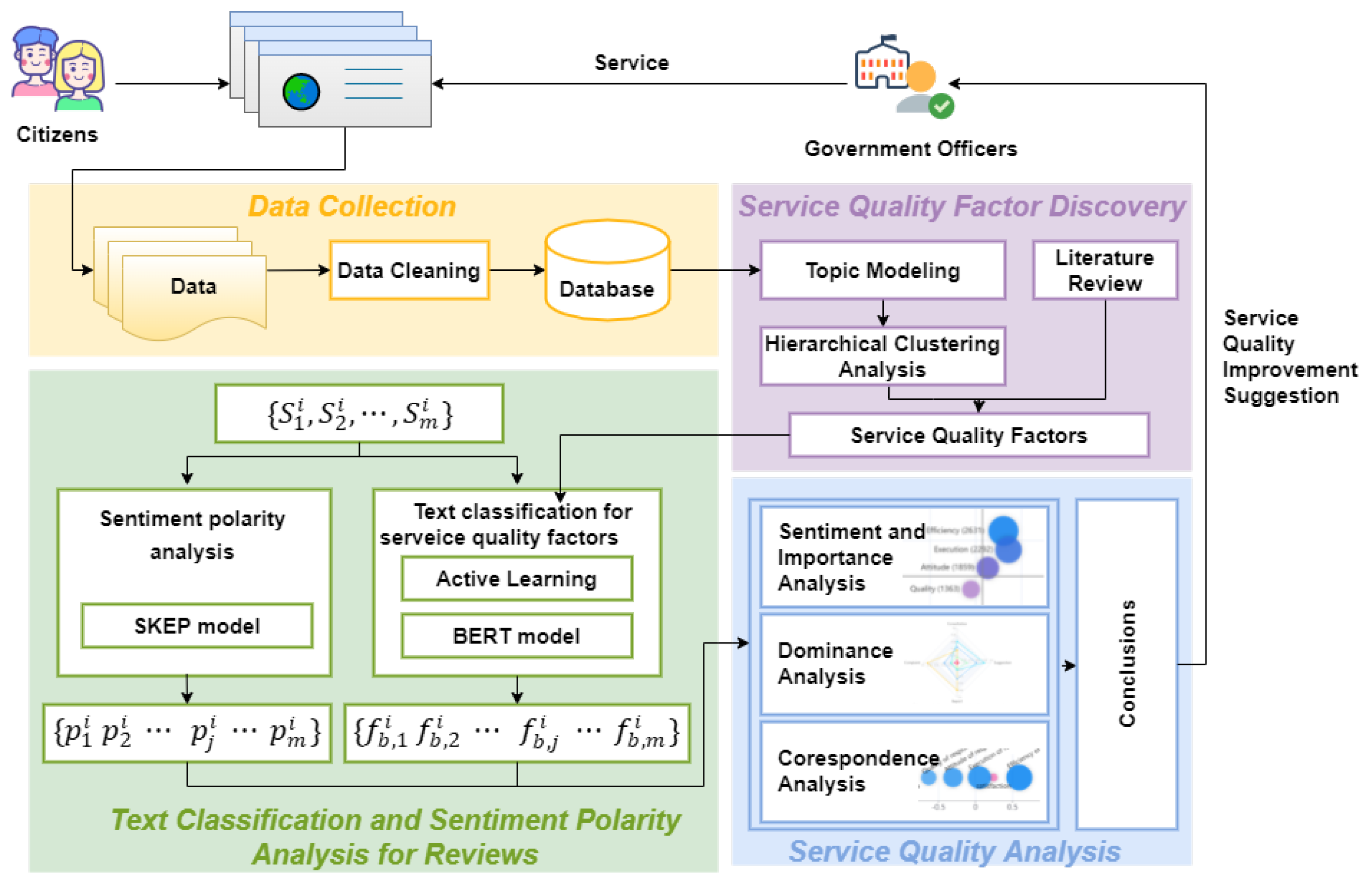


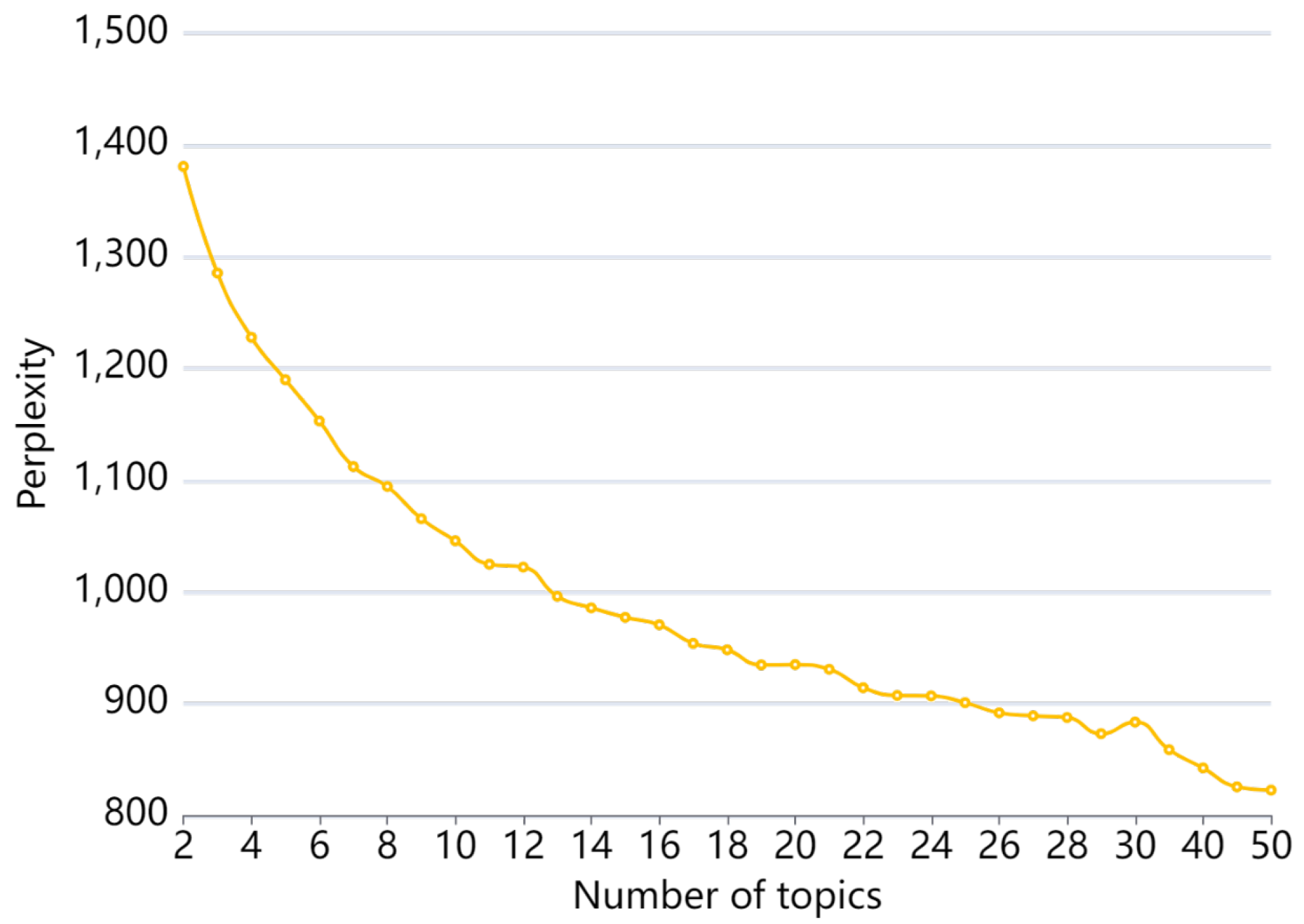
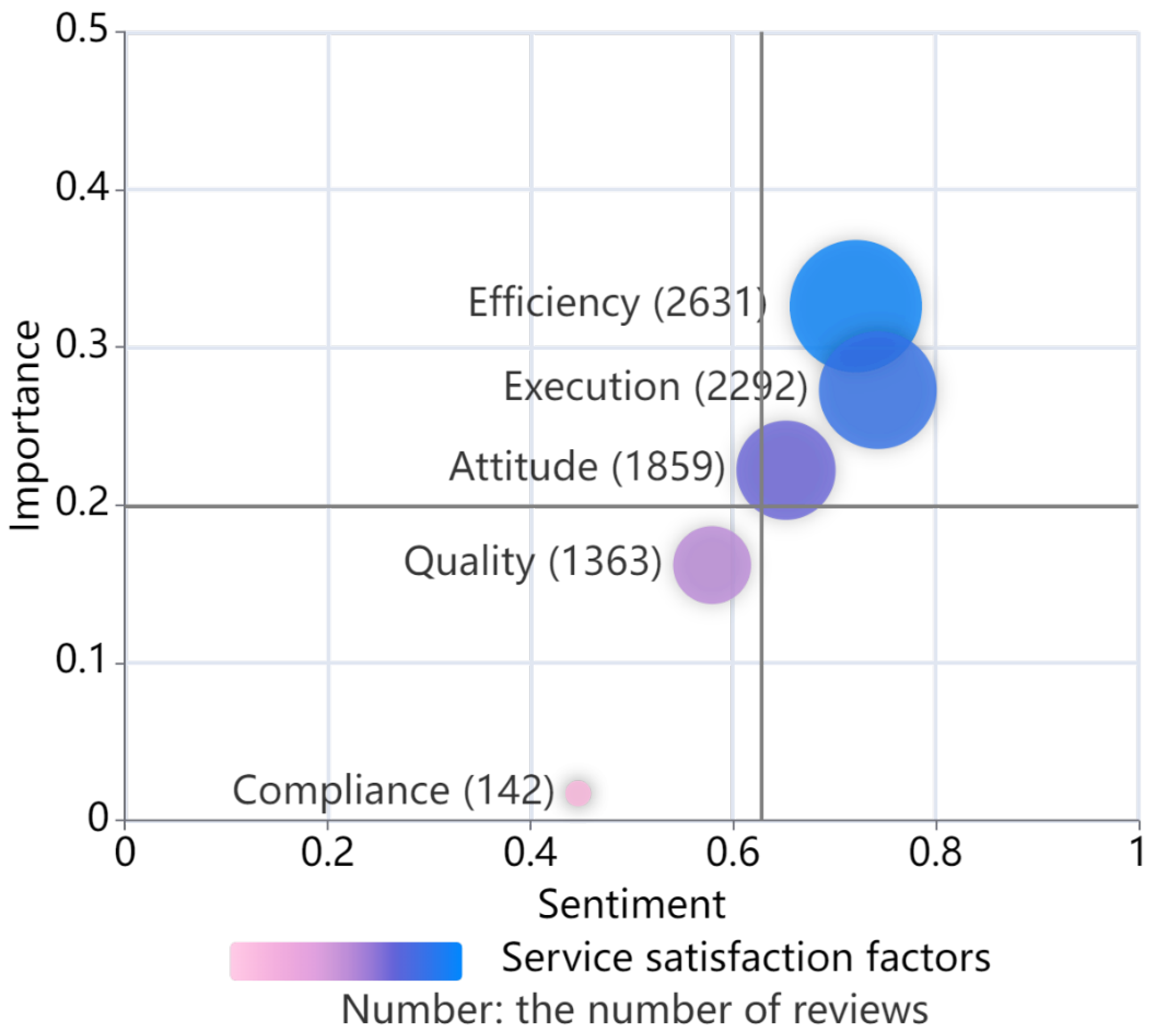

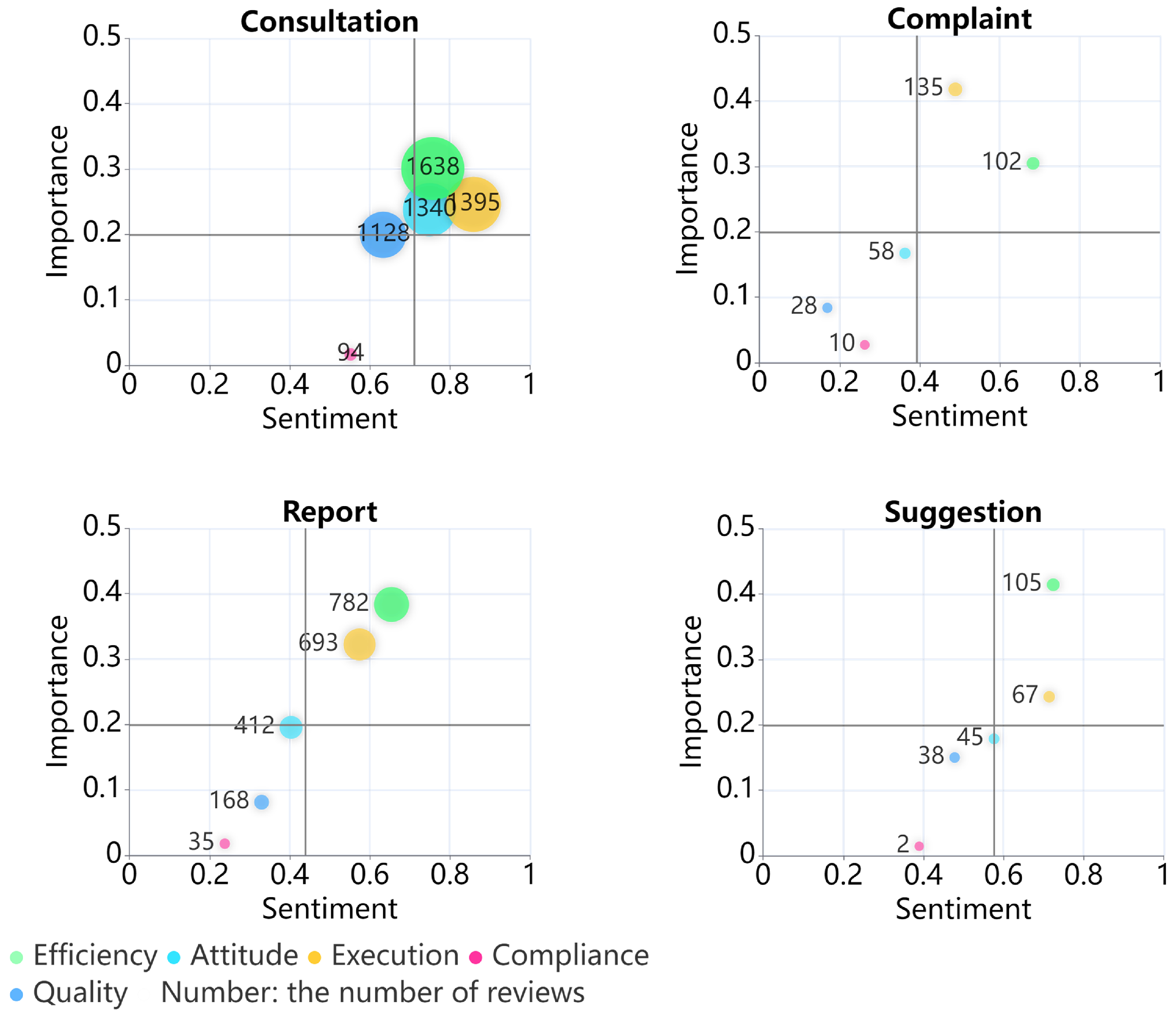

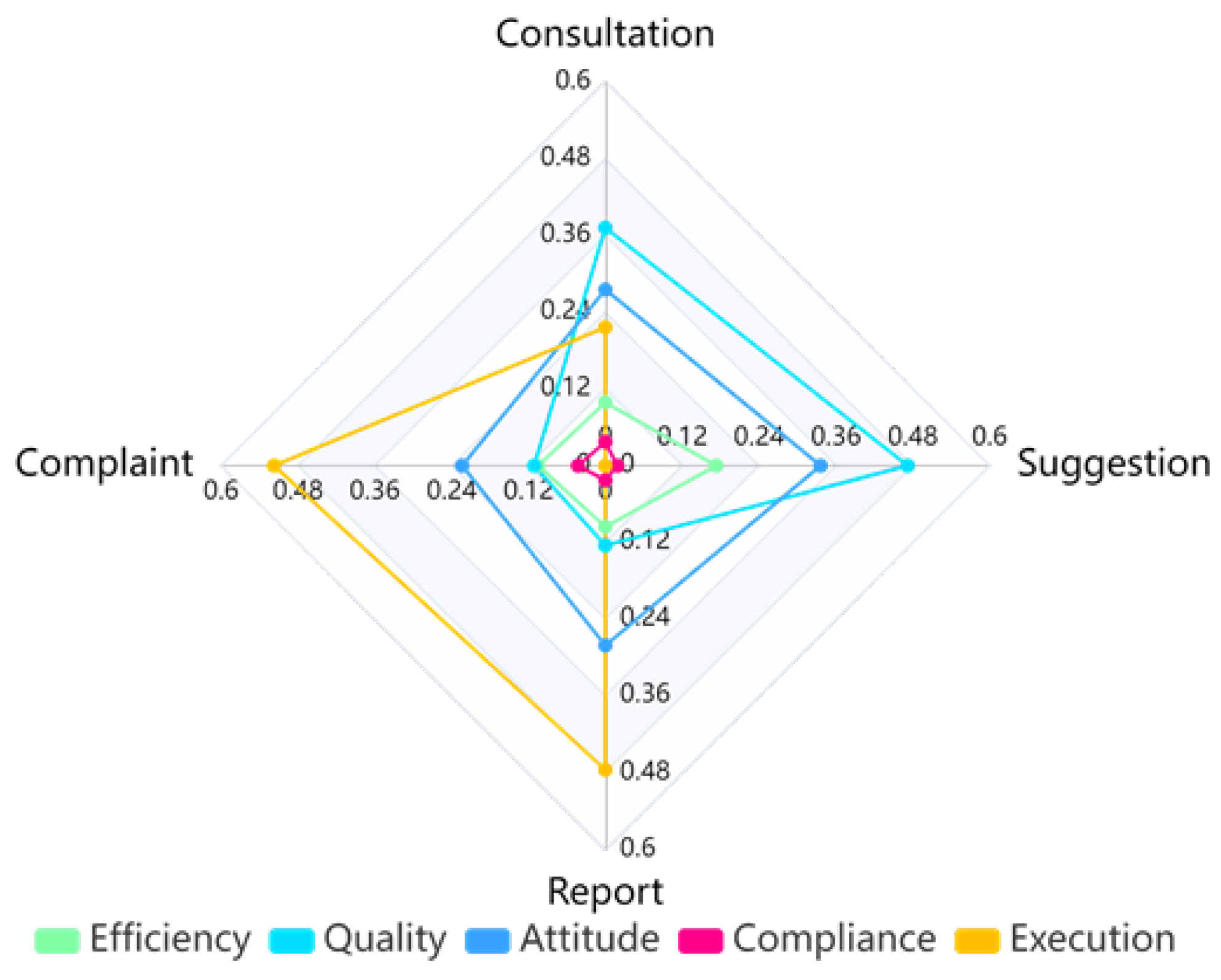

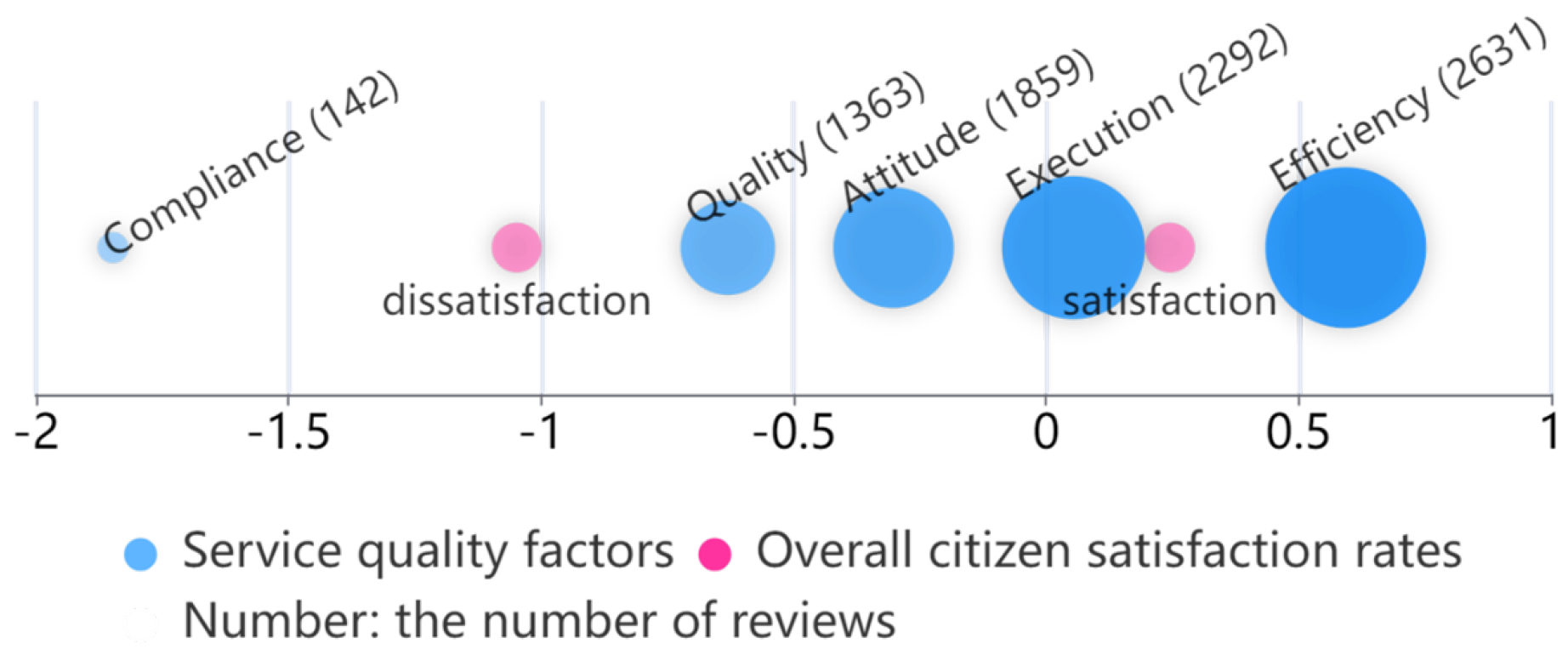
| Authors | Time | Research Method | Sample | Sample Size |
|---|---|---|---|---|
| Barnes and Vidgen [34] | 2004 | literature review, questionnaire survey | Users of the UK Inland Revenue website | 420 |
| Horan et al. [35] | 2006 | literature review, questionnaire survey | Older citizens (over 55) and graduate students of America | 119 |
| Baker [36] | 2009 | literature review | - | - |
| Verdegem and Verleye [27] | 2009 | literature review, questionnaire survey, interview | Citizens of Flanders | 1679 |
| Alanezi et al. [18] | 2010 | literature review | - | - |
| Kaisara and Pather [37] | 2011 | literature review, questionnaire survey | Citizens around Cape Town metropolis and university students | 161 |
| Omar et al. [38] | 2011 | literature review | - | - |
| Papadomichelaki and Mentzas [39] | 2012 | literature review, questionnaire survey | Users of KEP website | 894 |
| Zaidi and Qteishat [20] | 2012 | literature review | - | - |
| Qutaishat et al. [40] | 2012 | literature review, questionnaire survey | Citizens of Jordan | 211 |
| Alawneh et al. [28] | 2013 | literature review, questionnaire survey | University employees | 206 |
| Stefanovic et al. [29] | 2016 | literature review, questionnaire survey | Employees of e-government systems in Serbia | 154 |
| Kurfalı et al. [22] | 2017 | literature review, questionnaire survey | Citizens of Turkey | 529 |
| Janita and Miranda [23] | 2018 | literature review, questionnaire survey | Quality management specialists in the Spanish university sector | 62 |
| Lanin and Hermanto [30] | 2019 | literature review, questionnaire survey | Citizens of West Sumatra | 4177 |
| Li and Shang [24] | 2020 | literature review, questionnaire survey | Citizens of China | 1650 |
| Chen and Zhang [26] | 2020 | literature review, questionnaire survey | Citizens of China | 249 |
| Wang and Teo [31] | 2020 | literature review, questionnaire survey | Citizens of Henan Province, China | 286 |
| Chan et al. [6] | 2020 | literature review, questionnaire survey | Ysers of the government web portal | 10,381 |
| Wijatmoko [41] | 2020 | literature review, questionnaire survey | Users of e-Government | 82 |
| Lamsa and Gupta [15] | 2021 | literature review, questionnaire survey, interview | Citizens of Nepal | 12,872 |
| Gamaliel et al. [33] | 2022 | literature review, questionnaire survey | Citizens who have experienced the services | 200 |
| El-Gamal et al. [32] | 2022 | literature review, questionnaire survey | Users of e-government services | 350 |
| Model | SST-2 | Amazon-2 |
|---|---|---|
| Previous SOTA | 97.1 | 97.37 |
| RoBERTa | 94.9 | 96.61 |
| RoBERTa + SKEP | 96.7 | 96.94 |
| RoBERTa | 96.5 | 97.33 |
| RoBERTa + SKEP | 97.0 | 97.56 |
| Factor | Keywords |
|---|---|
| Efficiency | 效率 (efficiency), 时间 (time), 速度 (speed), 及时 (in time), 快 (fast), 慢 (slow) |
| Quality | 清楚 (clear), 详细 (detailed), 简洁 (brief), 准确 (accurate) |
| Attitude | 态度 (attitude), 热情 (enthusiastic), 踢皮球 (kick the ball), 走过场 (go through the motions) |
| Compliance | 合法 (legal), 政策 (policy), 法规 (law), 制度 (system), 规划 (plan), 规范 (norm) |
| Execution | 解决 (figure out), 解决方案 (solution), 办理 (handle), 落实 (implement), 处理结果 (outcome) |
| Review Text | Sentences | Category |
|---|---|---|
| Thank you very much for answering my questions in time. But the proposals you have put forward cannot solve the fundamental problem. The pollution of the river has caused great discontent among the local people, who have repeatedly lodged complaints to the higher authorities. Whenever someone reports it, the discharge of sewage greatly decreases. However, as soon as the situation calms down, the pollution actually worsens. Please strengthen government supervision to effectively address the pollution issues for the citizens! | Thank you very much for answering my questions in time. | Efficiency |
| But the proposals you have put forward cannot solve the fundamental problem. | Execution | |
| The pollution of the river has caused great discontent among the local people, who have repeatedly lodged complaints to the higher authorities. | None | |
| Whenever someone reports it, the discharge of sewage greatly decreases. | None | |
| However, as soon as the situation calms down, the pollution actually worsens. | None | |
| Please strengthen government supervision to effectively address the pollution issues for the citizens! | None |
Disclaimer/Publisher’s Note: The statements, opinions and data contained in all publications are solely those of the individual author(s) and contributor(s) and not of MDPI and/or the editor(s). MDPI and/or the editor(s) disclaim responsibility for any injury to people or property resulting from any ideas, methods, instructions or products referred to in the content. |
© 2023 by the authors. Licensee MDPI, Basel, Switzerland. This article is an open access article distributed under the terms and conditions of the Creative Commons Attribution (CC BY) license (https://creativecommons.org/licenses/by/4.0/).
Share and Cite
Ye, X.; Su, X.; Yao, Z.; Dong, L.-a.; Lin, Q.; Yu, S. How Do Citizens View Digital Government Services? Study on Digital Government Service Quality Based on Citizen Feedback. Mathematics 2023, 11, 3122. https://doi.org/10.3390/math11143122
Ye X, Su X, Yao Z, Dong L-a, Lin Q, Yu S. How Do Citizens View Digital Government Services? Study on Digital Government Service Quality Based on Citizen Feedback. Mathematics. 2023; 11(14):3122. https://doi.org/10.3390/math11143122
Chicago/Turabian StyleYe, Xin, Xiaoyan Su, Zhijun Yao, Lu-an Dong, Qiang Lin, and Shuo Yu. 2023. "How Do Citizens View Digital Government Services? Study on Digital Government Service Quality Based on Citizen Feedback" Mathematics 11, no. 14: 3122. https://doi.org/10.3390/math11143122
APA StyleYe, X., Su, X., Yao, Z., Dong, L.-a., Lin, Q., & Yu, S. (2023). How Do Citizens View Digital Government Services? Study on Digital Government Service Quality Based on Citizen Feedback. Mathematics, 11(14), 3122. https://doi.org/10.3390/math11143122





